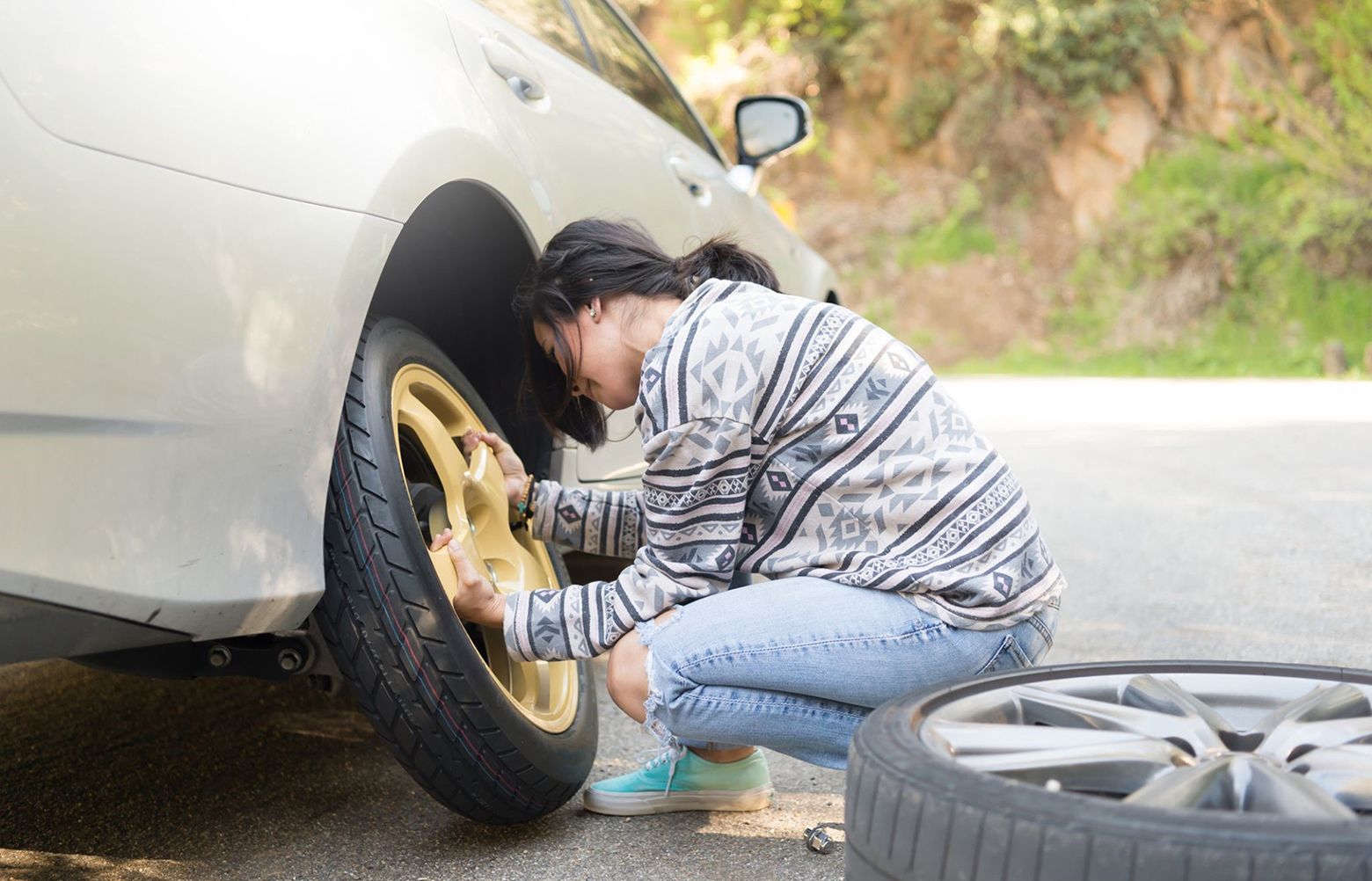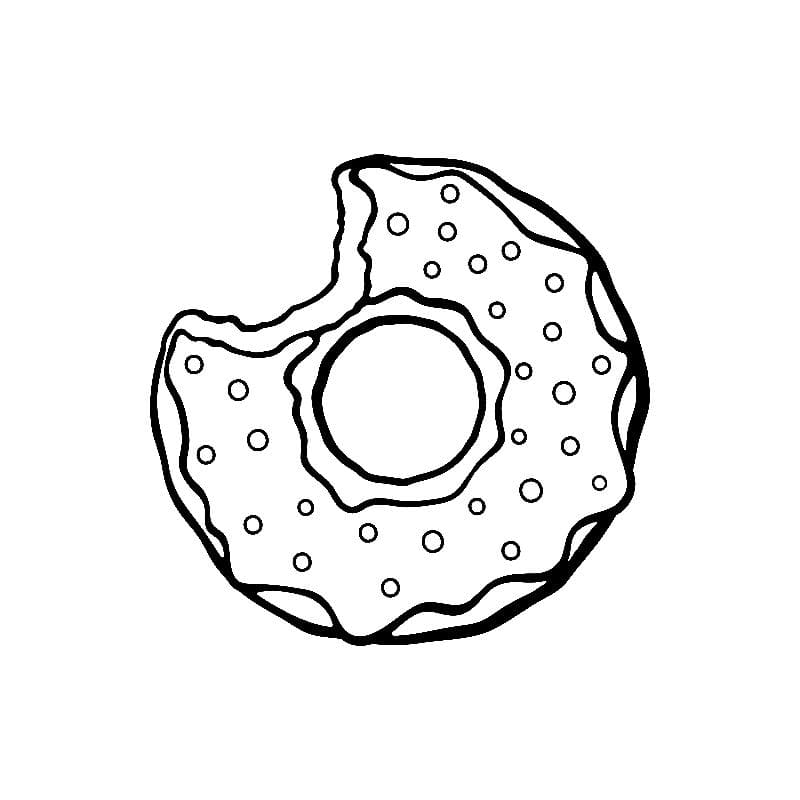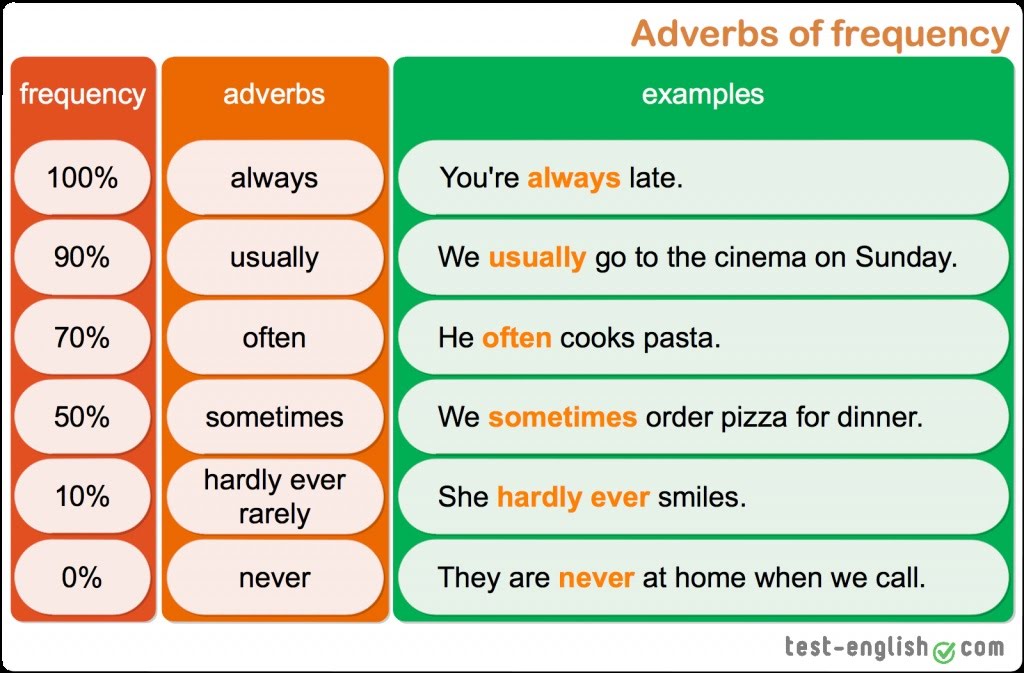A spare donut tire is essential to prevent flat tires on the road. This type of tire does not have all the standard wheel functions, especially with limited speed.
So, how fast can you drive on a donut? You can only run up to 50 – 70 mph. If this limit exceeds, some damage can happen to your vehicle’s system!
In a flat tire on the road, spare donut tires become very useful and meaningful. The following article will help you better understand this issue.
How Fast Can You Drive On A Donut?As mentioned above, you can drive on a donut up to 50 – 70 mph. You should follow these rules for using tires to ensure safety when participating in traffic.
Driving speed depends mainly on the quality of the donut. Although there is variation between brands, the average travel speed data is around 50 mph.
To properly determine the essential parameters, you can monitor manufacturers’ information printed on the packaging. They are often in easy-to-see places in large letters.
These are all the same knowledge in the user manual if you look closely. Different spare tire manufacturers also have different travel speeds, mainly due to other materials and application technology.
To be on the safe side, you should carefully review the missing information both on the wheel and the manual or consult a professional. If the recommendations are not clear, you should drive at 50mph or below to stay safe on the road.
How Should You Drive With A Donut Tire?The problem is quite similar to the one above. We should understand why it is a spare tire because it is only in the event of a rare incident.
Many of you will think that both tires are the same, which seems to be a misconception. Donut has a smaller design, thinner wall, and much less performance than a regular one, so it is unsuitable for long-term use.
As a recommendation for safety, you should not drive more than 70 miles and exceed 50mph.
Driving too fast with a donut spare tire is dangerous and increases the cost.
Dangerous situations will occur when you drive with the spare tire at a fast speed for a long time. The significant risk for the above problem is tire failure.
Traveling beyond 50 miles will not cause immediate consequences, but will certainly affect driving safety and many other dangers.
Unlike regular tires, a damaged donut can be worse than you think. With a limited design in many aspects, the risk of losing control of the vehicle’s power causes consequences for the rotating shafts and other parts of the car.
Although no country has yet issued an official regulation on spare tires, some traffic violations related to the donut also cost you a lot of money.
Notes When Driving With Donut Tires?First, master the skills when using tire donuts, such as controlling the vehicle’s speedwell and not exceeding the allowed travel number, especially when turning or braking sharply. Sudden acceleration or turning will make the system not adaptive, putting pressure on the controller, causing equipment damage.
Sudden acceleration or turning will make the system not adaptive, putting pressure on the controller, causing equipment damage.
Choose the right spare tire for each vehicle type. There are two main products on the market: light tires and flat wheels. The weight is not too heavy for small cars like BMW or MINI, which tend to be donuts.
In contrast to heavy trucks such as containers or excavators, flat wheels are a reasonable choice because they have a large design, good gravity support, and can even be on the road in the absence of air pressure.
Besides, although the car can run from 50-70 miles, if you want to be suitable, quickly find a service center to put the standard tire back in place.
FAQsCan I go 70mph on a donut?You can drive 70 mph, but this speed is not recommended. Exceeding the allowable travel speed is extremely dangerous because it can cause serious consequences such as tire explosion, loss of control from wheel wear.
Although the speed figure depends on how the manufacturers manufacture, it ranges from 50-100 miles. However, you should limit the challenge and strictly follow the expert’s recommendations to be safe.
Some of the consequences of donuts cause to the car such as:
– Car heating
– Loss of power in the steering system
– Hanging system
– Burn the wall
– Damage to the transmission of the steering unit.
You can do so, but we always advise against this. If you think that speeding does not affect you too much in a short time, this seems to be a completely wrong assumption. And no one can predict the future, so overusing tires can make you sick dangerously in traffic.
Are donuts legal?The short answer is yes. It is widely available worldwide. And almost if anyone owns a car, there is a tire available.
However, if you arbitrarily produce donut tires without the permission of the competent authority, you are violating the law on illegal activities.
Understanding the usage procedure and the notes to avoid will make it easier to control a car with a donut. Factors from the outside environment also impact spare tires, so the priority solution is always to find a tire repair shop soon.
We hope that this information will help you understand this matter. If you have any other related questions, don’t hesitate to leave a comment in the section below. We will try to help clarify these questions in a timely manner!
Thank you for taking the time to read this!
This post was last updated onA spare tire may come in handy in emergency cases like a flat tire. However, it should be used as a temporary option only because you cannot expect the same vehicle performance as regular tires provide.
So, how fast can you drive on a spare tire? The maximum speed of a spare tire is 50 mph, and you must not drive farther than 70 miles.
Else, it would cause vehicle issues like tire wear, tire blowout, flat tire, or damage to car parts.
Table of Contents
A spare tire is an additional tire carried on the trunk of a car. It can be a full-size spare tire or a donut tire.
1. With a full-size spare tire
A full size spare tire can be a matching spare tire of your traditional tires. Meaning they have the same size, weight, and perhaps, even brand.
Therefore, they don’t have specific limits, especially on the highway. You might be able to drive more than 70 miles without lowering the speed.
The max speed on spare tire will be 90 miles if you have to stretch a little to reach the destination as soon as possible.
2. With a donut tire
A donut tire, also known as a donut spare, is smaller than regular tires because it was designed to be light, space-saving, and portable. Its primary purpose is to replace a flat tire and bring your vehicle to the nearest repair shop.
Donut spares are small, light, and have minor tread construction than regular tires. Therefore, to be safe, the fastest you can go on a donut spare is 50 mph, and the farthest you can drive is not more than 70 miles.
This limitation makes it unsafe to drive on a donut on the highway.
1. Tire Wear
Donut spares are smaller, lighter, and have little tread, so driving faster than 50mph will cause the wheel to work harder and lead to tire wear quickly.
2. Tire blowout
Since donut tires do not have the significant features of regular tires, exceeding spare tire speed limit will cause the tire to blow out and lose control of the vehicle.
Worst, it may lead to an accident like a car crash, vehicle collision, or hitting pedestrians.
3. Flat Tire
Donut tires are constructed with less resistance to bumps, road hazards, or projectiles. So driving them faster and longer than their service design may put them at risk for another flat tire emergency.
4. Damage to car parts
In general, when donut tires are overused, they cause damage to car parts such as:
Safety and Convenience
Suppose your full-size spare tire matches the current specifications of your regular tires. In that case, you can drive safely without worrying about another emergency.
On the other hand, when you drive on a donut, it is advisable to quickly visit the nearest auto repair shop.
Cost
Donut spare tires cost around $50-300, while full-size spare tire may start at $100 or have the same price as your regular tires.
Don’t use the spare tire if you experience a flat tire on one of the driving wheels. Instead, get the replacement from the non-driving wheel.
Replace the tire in the non-driving wheel with the full-size spare tire. As a result, you won’t feel a big difference in ride quality.
If you put a donut tire on a driving wheel, there is a huge shift in handling because it is undersized. It may throw you off the road when you turn or slide when you brake because there is much weight to carry.
If you don’t have a choice but to use the donut tire in front, drive a short distance. Don’t take other risks. Calling a towing service is a safer option if there’s a long way to go.
Driving too fast on a donut spare tire can cause flat tires, tire wear, or tire blowout, leading to loss of vehicle control and road accidents. It may also damage vehicle parts such as the brakes, steering system, suspension, and transmission.
It may also damage vehicle parts such as the brakes, steering system, suspension, and transmission.
The optimal speed for driving on a donut tire is 50 mph. Reddit users attest that driving more than 70mph is dangerous.
Can I drive a spare tire on the highway?
Indeed, driving on a spare tire on the highway is dangerous because the average speed required is 50mph.
If there is no other way, you might drive on a full-size spare tire and not a donut tire.
Not knowing how fast can you drive on a spare tire is dangerous.
Driving spare tires at more than the recommended speed of 50 mph and mileage of 70 miles will cause more damage to the vehicle, not limited to flat tires or tire blowout. Worst of all, accidents may happen.
Worst of all, accidents may happen.
Although full-size spare tires are ideal, they are not available for small-sized vehicles. Even if donut spare tires are not for long-term use, they are reliable for short distances.
If you want to know more about fixing flat tires, don’t hesitate to ask some questions.
Spare tires are useful insurance, but most are not designed to replace a flat tire indefinitely.
Not all spare wheels are created equal, and to better understand which spare tire your vehicle is equipped with, please refer to your vehicle owner's manual. Temporary spare tires generally do not have the life expectancy that regular tires do. Unlike a normal car tyre, spare tires can only have one polyester ply in the sidewall and two steel belts with a ply of polyester in the tread, meaning they can't provide half the performance and safety that an average tire can provide. nine0003
In this article we will try to describe all types of spare wheels available, and tell you how long you can drive on each of them.
These little spare tires are commonly referred to as donuts or space savers. They are very popular because they are lightweight and do not take up much space in the luggage compartment of your car. Due to the low weight, even a person who is not at all predisposed to physical activity will not find it difficult to lift and install such a spare wheel. By the way, how to do it in the field, without the help of specialists, read here. nine0003
However, because the donuts are smaller and lighter, they lack two key features of conventional tires: strength and stability. Most of these spare tires have a speed limit of up to 90 km/h. With such a spare tire, you can expect to cover a distance of 80 km, some of them can cover up to 110 km. This should be enough to find the nearest tire shop and fix the damaged tire, or find a shop where you can buy a brand new tire if the previous one is no longer repairable. nine0003
From the above, we can conclude that the donut spare wheel is not recommended for long trips or pulling with its replacement with a normal, standard wheel.
Some car manufacturers fit their vehicles with full size spare tires. They are, of course, heavier than space savers and take up much more space in the trunk, but they are more durable and durable. They are able to last you much longer than donuts. However, these tires may have a different tread pattern or rubber compound than a conventional tire. This can affect overall handling and safety on the road. nine0003
Although these tires are more durable, they are primarily designed to get you to your destination before you deal with the tire problem. In addition, do not forget that the place for the spare wheel in the car is empty, and it should be filled as soon as possible before another tire is punctured.
If you do not have a spare tire in your vehicle, then your vehicle may be equipped with run-flat tires. BMW and MINI typically install these tires during production. This type of tire is tougher than other tires and can withstand a puncture and keep going. However, they are also not designed to be ridden forever. nine0003
However, they are also not designed to be ridden forever. nine0003
Most run-flat tires recommend replacing as soon as you notice a puncture. As a rule, they are designed for a distance of up to 100 km in a punctured state, then they must be replaced. Compared to regular tyres, running-flat replacements are not cheap. Some craftsmen can patch run-flat tires, but manufacturers do not recommend going down this path.
One of the advantages of these tires is that you can get to the nearest car wheel shop at speeds up to 80 km/h, i.e. almost like a breeze. nine0003
Every motorist should remember that any type of spare tire is only there to keep you moving forward and replace a punctured tire as quickly as possible. The spares are a temporary replacement, and s, while full-size spare tires may look exactly like the rest of your car, they don't have the same performance as s and can get you in trouble on the road. nine0003
nine0003
Remember, your car's tires are the only thing that keeps you and your passengers on the road, so you should never speculate on your own safety or the safety of those around you.
On the road, various troubles can happen to a car and a rubber puncture on a car is a common case.
The absence of a spare wheel or a standard "roll-in" seriously complicates the situation. If the driver has the skills, you can put a temporary patch on the puncture, otherwise you will have to order a tow truck. nine0003
We recommend that you carry a spare wheel, a repair kit for various occasions, and the necessary tools, then you can get out of any traffic situation with dignity. If all this is not there, then you can drive on punched rubber a short distance to a service station or tire fitting. We are not talking about hundreds of kilometers of travel, we are talking about a short distance.
Leakage of air from a car tire can occur in different situations. At the same time, punching is not necessary, there are other unforeseen and unpleasant situations. Most common:
At the same time, punching is not necessary, there are other unforeseen and unpleasant situations. Most common:
 nine0060
nine0060 Potholes or bumps in the road can be a serious problem. Hitting such an obstacle at high speed can lead to deformation of the car disk, subsequently to damage to the rubber. Very serious damage, which is impossible to fix on your own, without the use of special equipment, you need to go to a tire service. nine0003
Use of used car tires - follow manufacturer's specified service life. Otherwise, the wheel may deflate due to high wear. There is a risk of explosion directly during operation.
Problems exist with tubeless tires - the fitting sometimes does not fit well on the disc, air leaks occur.
The main causes that lead to damage to car tires and air leakage are indicated. Whether it is possible to drive on a flat tire is determined by the driver himself, taking into account his experience and capabilities. nine0003
nine0003
Driving with a flat tire is not recommended. Driving a car is significantly more difficult, there is a risk of getting into an accident, creating a threat to other road users.
Among the main problems that can lead to driving with low tire pressure are:
 nine0060
nine0060 A flat tire is a serious hazard. Each driver must understand this and take all necessary measures to eliminate the problem. In no case should a puncture be ignored, at high speed the situation can completely get out of control. The ideal would be to replace the wheel with a spare, repair at the nearest tire shop.
A car tire is a complex system. Consists of different elements. Manufacturers use special technologies and materials to provide the declared driving characteristics of the car. The special pattern on the main part of the tire has its own functionality, and does not serve solely for beauty. Any deviation from the norm leads to a decrease in the functionality of the tire, respectively, the car loses its qualities. Its use becomes unsafe until the problem is solved. nine0003
Winter Drive protection
Tires Goodyear UltraGrip Arctic 2 SUV
Winter Drive Protection Sound Comfort
Rating:
4. 5
5
Tires Goodyear UltraGrip Ice 2
Winter Drive protection
Tires Goodyear UltraGrip Performance+ SUV
Winter Drive protection
Tires Goodyear UltraGrip Arctic 2
Winter Drive Protection Run On Flat Sound Comfort
nine0002 Tires Goodyear UltraGrip Performance+ It should be noted that under no circumstances should you drive with a completely flat tire. The situation can get out of control of the driver at any time, the tire will fly off the disk, he will receive damage that will lead to new problems. It's best to call a tow truck, no matter the cost. nine0003
The situation can get out of control of the driver at any time, the tire will fly off the disk, he will receive damage that will lead to new problems. It's best to call a tow truck, no matter the cost. nine0003
An exception to the rule may be a tire that still has some air left in it. You can try to get to a service station or tire fitting. You can also try to inflate the tire to give yourself more time.
Low pressure driving is possible subject to the following rules:
The average driving distance allowed with a half-flat tire is 10 kilometres. This is only allowed if the above rules are observed.
If the problem of low tire pressure, puncture or other damage is not addressed in a timely manner, it leads to negative consequences. The following systems may experience problems:
The following systems may experience problems:
A vehicle with flat tires is a hazard to other road users and its driving characteristics are affected.
It must be understood that movement with insufficient pressure leads to deformation of the rubber. You run the risk of completely damaging the tire, subsequently replacing it with a new one. Therefore, the decision to drive on half-flat tires must be made carefully, carefully evaluate all the consequences and alternatives.